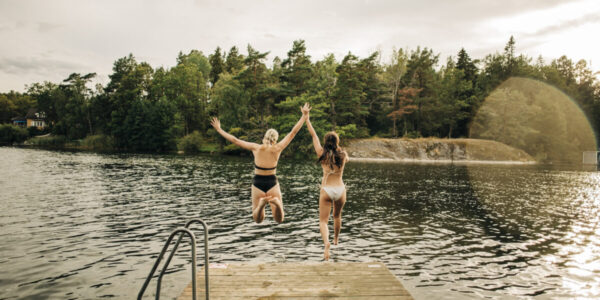
He Survived a Shark Attack. Here’s Why He Wants to Protect Them.
After surviving a shark attack as a teenager, Kauai-based photographer Mike Coots dedicated his life to protecting the very creatures that changed his forever.

Courtesy of Mike Coots
Mike Coots is the embodiment of a waterman. The Kauai local and ocean advocate has dedicated his life to the sea, crafting images of sharks using lenses traditionally used for portraiture that lend an intimate, artistic quality to apex predators. His film with OluKai premiered at Turtle Bay’s “Meet the Legends”—a series whose name Coots certainly lives up to.
The photographer was first called to shark conservation after an attack resulted in the loss of his leg at just 18 years old. “The ocean has given me far more than it has ever taken away,” says Coots. Here, he shares why protecting sharks continues to be central to his work today.

Courtesy of Mike Coots
Can you talk a little bit about why these animals are so important to ocean ecosystems?
Sharks have been around for over 400 million years. They’ve been on Earth longer than dinosaurs, so there’s obviously a huge ecological function. They get rid of the sick, the dying, the diseased, and the weak, and they keep prey and predator populations in check below them. They’re obviously an apex species, but they’re also a keystone species, so they disproportionately help the health of the ocean more than others. They’re at the very top. Think of it this way: If you take off the roof of your house, everything below that collapses. If you dive in areas that have a lot of sharks, you’ll notice there’s a lot of fish, biodiversity, and biomass. The reefs are healthy. They go hand in hand. A healthy ocean needs a healthy shark population.

Courtesy of Mike Coots
What issues are sharks—especially here in the Pacific—currently facing?
It’s been estimated that upwards of 100 million sharks a year are killed for shark fin soup. When I first heard that statistic, I had no idea that there were even that many sharks in the ocean! So that’s a huge detrimental effect. And then another issue is bycatch in the commercial fishing industry. The hope is that with newer technology and new types of hooks, they’ll be able to release a lot more sharks alive, but it is still so stressful for sharks.
Your photography style shows these animals as having so much personality. What are some of the tools you use to achieve that?
It’s a bit unorthodox in the underwater world. If you Google “shark underwater,” nine out of 10 images are from a fisheye or very wide-angle lens. I went to art school and studied portraiture and love shooting people, and I try to apply those same skills underwater. You can just feel the essence and the soul of the animal. And I think if you can maybe see a little bit of yourself in something, it brings that connection closer, and then you learn about it and eventually will want to protect it. You’re really only going to want to save something that you love. I try to create that connection, whether it’s a catch of light in the eye of the animal, just like you’d see a highlight in a human subject’s eye. It adds beauty to the animal, and it makes them just look glorious and gorgeous. It’s really fun.

Courtesy of Mike Coots
What’s your favorite species in the ocean to shoot?
Obviously, the great white. There’s nothing like it on Earth. That they’re just so misrepresented in the way Hollywood portrays them—they’re just always ripping something apart. When you spend a lot of time with great whites, you realize that’s maybe one percent of their time. The rest, they’re just swimming around beautifully. And when the sun hits a certain way, they have these beautiful blue eyes.
What are some ways that you hope fans of your photography might engage with shark conservation?
These issues seem so big, and it’s not just shark finning. You’ve got ocean acidification and global warming and coral reef destruction, it goes on. But I really think everybody’s got their own unique skill set, and there’s only one you. Find an issue that you’re passionate about. Mine is sharks. But whatever it is, there’s something that only you can do. Even the little things. If you go to the beach, find a little bit of plastic or twining, just stick it in your pocket. To me, one of the purest forms of aloha is going somewhere and wanting to do good.
